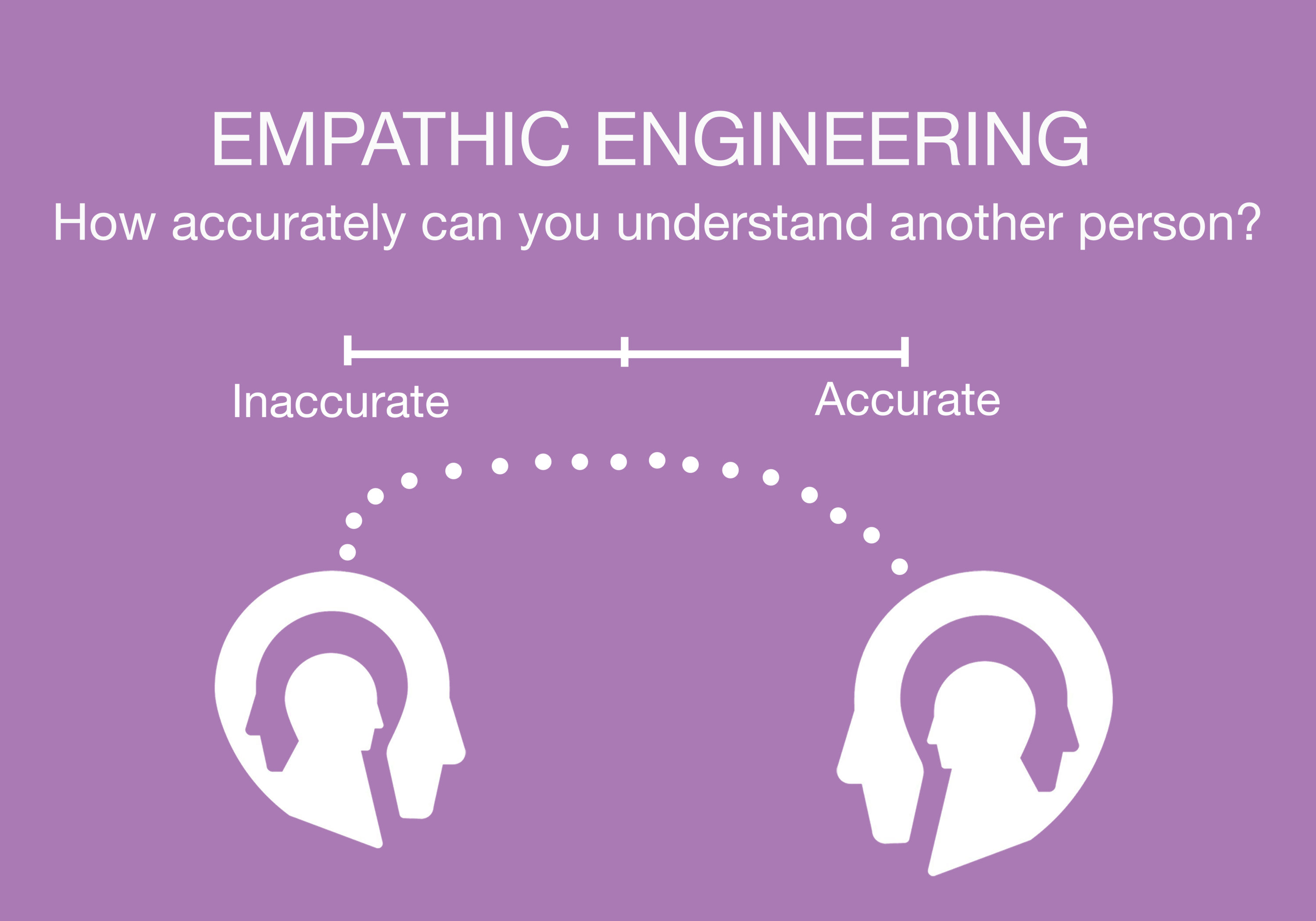As a designer, how well are you really able to understand users when you are empathizing with them? Our research shows, some factors may increase or decrease your empathic understanding. Do you know what they are and how do they influence your understanding accuracy? Users are not always thinking about the product during an interview. Do you know what are they thinking about?
Before we go through above questions, let us figure out what understanding accuracy is. Understanding users is not easy. Sometimes, users directly express their thoughts and feelings, but sometimes, they do not. The non-spoken thoughts and feelings may decrease designers’ understanding accuracy. To understand the role of these non-spoken thoughts and feelings, we adopt a behavioral psychological measure – Empathic Accuracy measure (Ickes, 1993) in our research. By using this measure, users are not only required to talk about products and its use during user interviews, but also report their non-spoken thoughts and feelings. It gives us a measure to quantify how well designers can infer users’ spoken content and non-spoken mental content. Similarities between users’ mental content and designers’ inferences are considered as accuracy here (Table 1).
Table 1. Examples of evaluating similarities between a user’s mental content and a designer’s inferences (0 essentially different, 1 something in common but not the same, 2 essentially the same)
|
CUSTOMER’S ENTRY
|
DESIGNER’S INFERENCES
|
SIMILARITY SCORE
|
|
|
He was feeling amused, and a bit embarrassed that his answer was so simple.
|
1 |
|
|
He was feeling relaxed since the question is easy.
|
0 |
|
“I was feeling this is a good moment when driving with friends.”
|
He was feeling happy of the times he has shared car with friends
|
2 |
This measure has been used in psychology research, but it is quite time consuming. Thus, we developed a Quick Empathic Accuracy measure (Li, Surma-aho & Hölttä-Otto, 2021). It is a shorter version of the Empathic Accuracy measure (Ickes, 1993). Comparing with the original measure, the short version will save approximately one hour to implement. We tested the quality of short version from four aspects: internal consistency, variance to differentiate designers’ empathic abilities, predictive validity, and reproducibility of result and similarity in the accuracy for each entry. Results show that the short version could provide a similar result as the original one.
This behavioral measure helps us to quantify the degree to which a person understands another person’s thoughts or feeling. By using it, we can get three types of data: users’ specific mental states through a user interview, empathic accuracy between designers and users, and designers’ accuracy of estimating the user’semotional feeling. The data helps to answers the questions above.
In our specific case, this is what we found out:
Q: As a designer, how well are you really able to understand users when you are empathizing with them?
A: The accuracy varies between 8%-64% from person to person.
Q: What factors influence the accuracy?
A: Shared experiences help improve the accuracy. Specifically being from the same national culture, same gender, and having visited the user’s country.
Q: How much do the users think about something other than the product or its use during the interview?
A: Users think about something else in user interviews most of the time (19%-26% of recorded thoughts and feelings were design related and 73%-81% non-design-related). Most commonly the non-design-related content are related to the interview situation or their past memories that are not always topic related.
The same measure can be further used to study what else impacts the empathic accuracy. Also, this measure could be combined with design tasks, such as needfinding or ideation. This is a potential research direction to discover the relationship between empathic accuracy and design outcomes. But for now, be aware of the differences between you and the user and know that you only understand a fraction of what the user is really thinking and feeling.
This research is from the Empathic Engineers project and funded by Technology Industries of Finland Centennial Foundation and Jane & Aatos Erkko foundation.
References
Li, J., Surma-aho, A., & Hölttä-Otto, K. (2021). Measuring designers’ empathic understanding of users by a Quick Empathic Accuracy (QEA). Proceedings of the ASME 2021 International Design Engineering Technical Conferences and Computers and Information in Engineering Conference IDETC-CIE2021. Virtual, Online: ASME.
Ickes, W. (1993). Empathic Accuracy. Journal of personality, 61(4): 587-610.
 Aalto DF
Aalto DF